Tested: 2020 Audi S6 Puts Value Ahead of the S7's Style
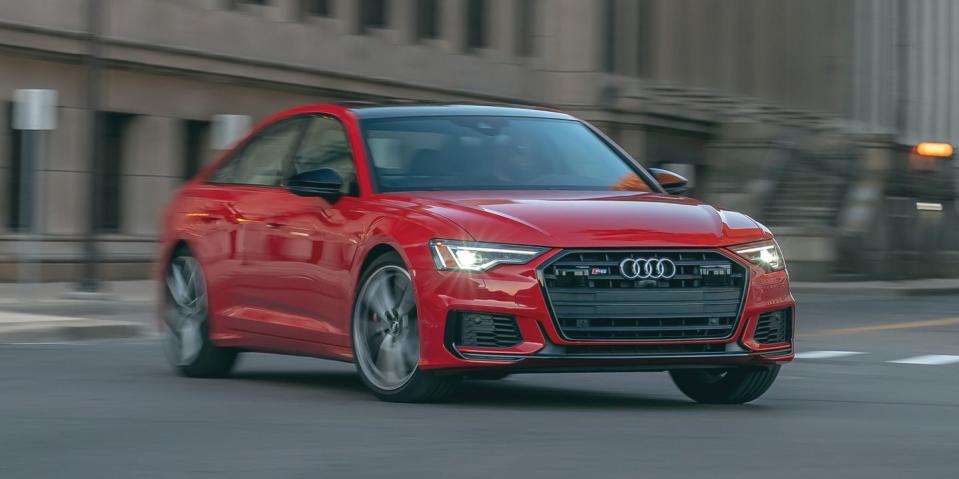
9/7/20 UPDATE: This review has been updated with test results.
This is a story about $10,000. That's the difference in base price between the 2020 Audi S6 sedan and its almost mechanically identical brother, the sleeker, swoopier, sexier S7 luxo-hatch. How much is sleek, swoop, and sexy worth?
Before speculating about the relative worth of seductive styling, we're going to dig into the extensive technology beneath the pretty skin.
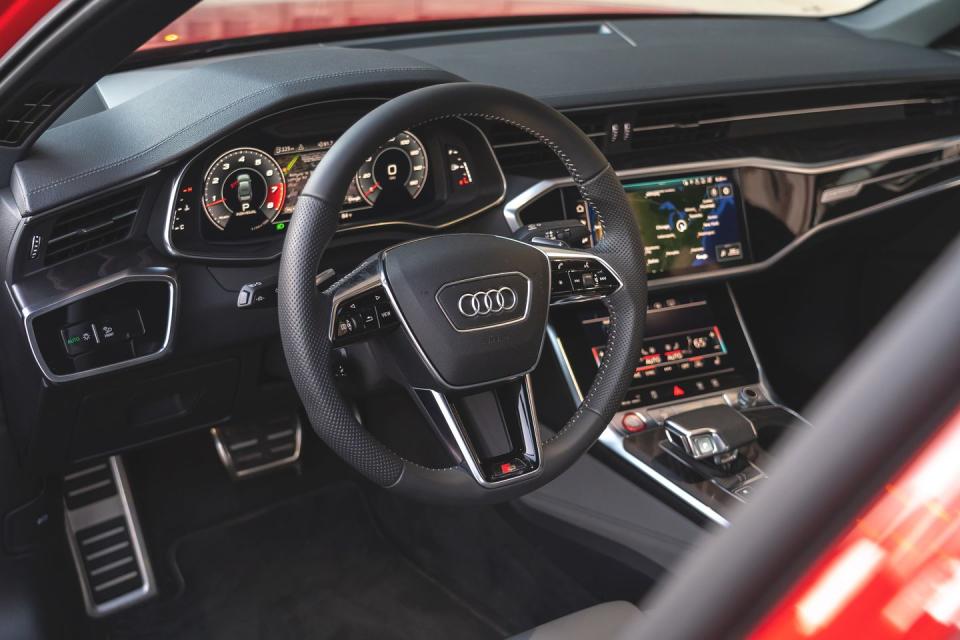
At the heart of both the S6 and S7 is a twin-turbocharged and supercharged 2.9-liter V-6 code-named EA839. This engine replaces the twin-turbocharged EA834 4.0-liter V-8 used in the prior generation of the pair—which was rated at 450 horsepower and generated 406 pound-feet of torque from as low as 1400 rpm. The EA839 V-6 and its electrical companion components give up six horses to the V-8. But 444 horsepower is still pretty dang mighty, and its 443 pound-feet is a good 37 more than the old V-8, although it peaks 500 rpm later at 1900 revs.
Putting the exhaust-driven turbochargers in the valley between the cylinder banks is standard practice now with Audi's V-configured engines. Having the exhaust ports aimed into the vee at the turbos results in a very short trip for exhaust gases that spin the turbines. That means quicker throttle response. However, that's not enough.
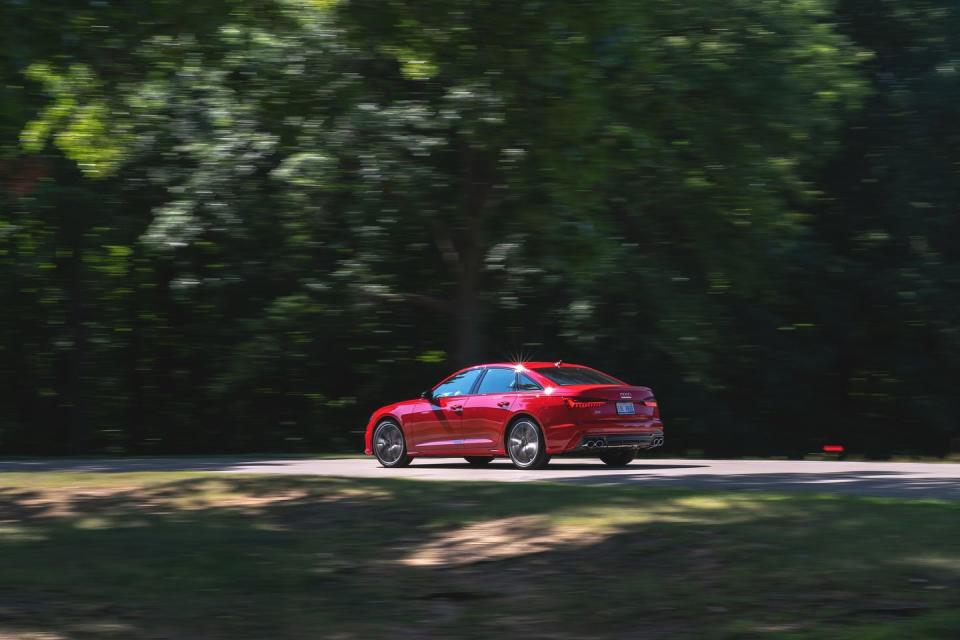
The S6 and S7 are Audi's first products in the United States to use a 48-volt electric supercharger. The liquid-cooled electric compressor hangs low on the left side of the engine between the turbos and the air-to-liquid intercooler. To sharpen throttle response, the electric blower generates boost while the turbos spool up to speed. Heck, theoretically it could produce boost even when the engine is turned off and cold. Add this latest trick to a roster that includes direct injection and variable valve timing, and the result is an astonishingly easygoing, ridiculously smooth, ludicrously responsive V-6. And then, beyond all that, there's the mild hybrid system and its starter-generator making its direct contribution of twist as well. All in, the S6 averaged 23 mpg while in our care, one mpg higher than its EPA combined estimate.
The boosted V-6 feeds Audi's version of the ubiquitous ZF eight-speed automatic transmission. The ZF, which is used in everything from the Rolls-Royce Dawn to Dodge Hellcats, is a conventional automatic with a torque converter similar in concept to the two-speed Powerglide optional in the 1962 Chevrolet Nova. Careful programming means it always works well. Rumors are that the ZF is so dominant that it'll soon show up in several Schwinn exercise bikes and the latest Caterpillar mining trucks.

Then, downstream of all that, is Audi's Quattro all-wheel-drive system. Yes, the Quattro system works well. A torque-vectoring rear differential is available and adds some calculated torque distribution to the rear tires for better rotation and balance through corners. What's so satisfying is how well Audi has integrated all this tech to work seamlessly almost to the point of invisibility. And despite all the computer wizardry orchestrating this complex powertrain, the S6 still has an engaging mechanical character.
Snick the paddle behind the steering wheel into a lower gear, and the whole S6 seems to squat down on its adaptive air suspension in eager anticipation of a corner. The optional four-wheel steering—part of the $4000 S Sport package, which also adds the torque-vectoring rear diff, a sport exhaust system, and red-painted brake calipers—seems to work, but its effect was tricky to detect on the example we drove in California. Our Michigan test car didn't have the S Sport package, but nonetheless felt supremely agile and composed. However, grip around the skidpad (0.90 g) with the 21-inch Pirelli P Zero summer tires (sized 255/35R-21) is merely adequate for a car of this caliber.
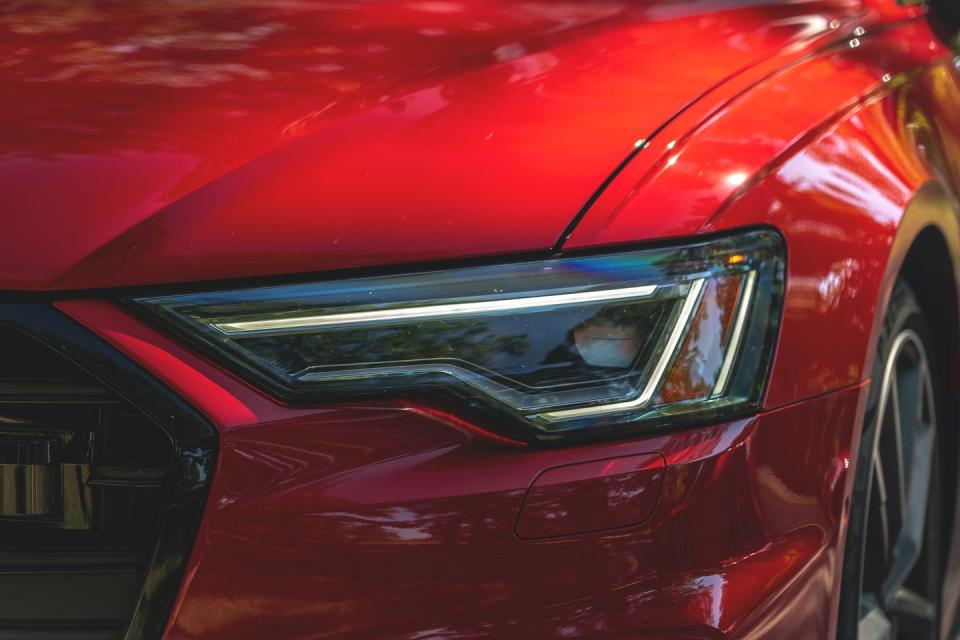
At the apex of a corner, as the driver starts to roll into the throttle, the response from the engine is gloriously progressive and inimitable. There are sedans that pack more brute wallop, but none that deliver power in a more engaging manner. This is a 4472-pound car that romps like a happy husky, bites into corners like a wolf, and then runs like whatever the wolf is hunting. The run to 60 mph takes 4.0 seconds flat—a tenth of a second quicker than the 2020 S7, which weighs an additional 168 pounds, yet two tenths slower than the previous, 83-pound-lighter S6 with the V-8. The new S6 and S7 pace each other exactly through the quarter-mile, with 12.5-second passes at 112 mph. But again, the last S6 we tested was a two tenths quicker and 1 mph faster.
From the inside, the S6 and S7 aren't much different from each other. There are some different surfaces and finishes, but the dash shapes are the same, and Audi's three-screen digital interface is identical. Once you're familiar with the menus and the haptic feedback built into the center touchscreens, it's fairly easy to manage the S6's intense number of electronic gadgets, navigation systems, and various safety technologies.
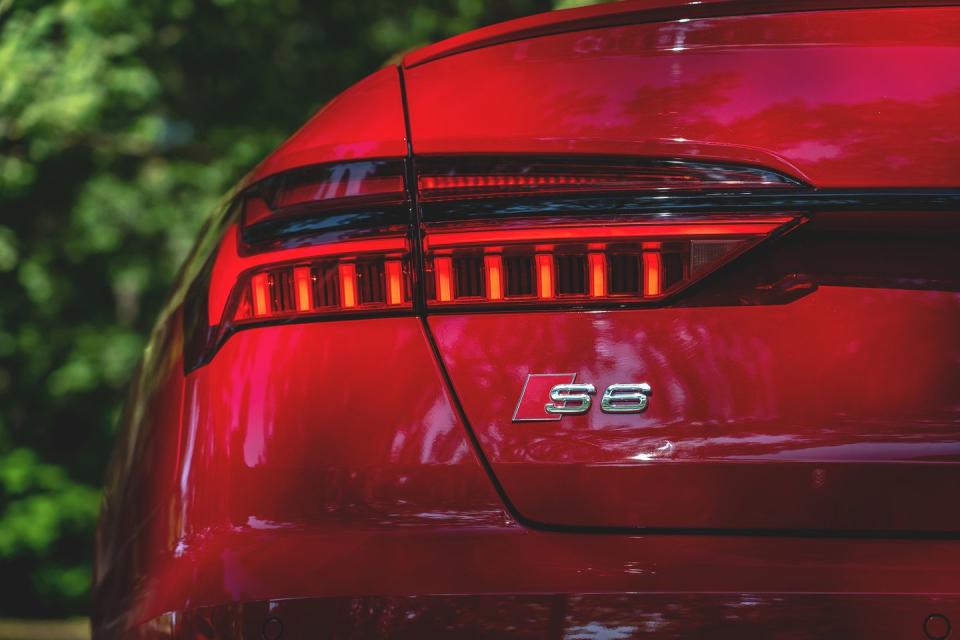
With its poised manner, excellent ride, beautiful interior, and buffet of tech stuff, the current mid-size Audi—internal model code C8, apologies to the Corvette—is flat wonderful. So, why does Audi ask another $10,000 for the S7?
While the S7 is an attractive car, it isn't as if the S6 is hard to look at. And the S6 has an inch more headroom in both the front and rear, plus more shoulder room and almost a half inch more rear legroom. About the only practical advantage the S7 offers is an additional 11 cubic feet of cargo room under its hatchback. That's important if you're building a pool house and expect to make a lot of trips to Home Depot for lumber.
Sex appeal matters, though. So, the S6 starts at $74,895 while the S7's base price is $84,895. About the only significant equipment difference is apparently that the S7 gets standard LED taillights; they're optional on the S6. Ten grand is a lot to pay for fancy taillights.
Get the S6.
You Might Also Like

 Yahoo News
Yahoo News 